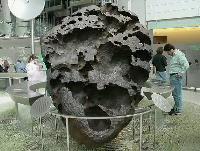 |
 |
MOUNT RUSHMORE - USA


| Location: | Geographic coordinates: | Area: | Area - comparative: |
| North America, bordering both the North Atlantic Ocean and the North Pacific Ocean, between Canada and Mexico. | 38 00 N, 97 00 W | total: 9,629,091 sq km | About half the size of Russia; about three-tenths the size of Africa; about half the size of South America (or slightly larger than Brazil); slightly larger than China; about two and a half times the size of Western Europe |
| Population: | Languages: | Capital: | Currency: |
| 280,562,489 (July 2002 est.) | English, Spanish (spoken by a sizable minority) | Washington | US dollar |

| Types of rocks used on the monument: | Granite (Igneous rock) |
Mount Rushmore National Memorial is located along the northeast edge of what is known as the Harney Peak Granite Batholith in the Black Hills of South Dakota. A batholith is a geologic feature that formed by the cooling of a large igneous body of magma below the earth's surface; if a similar igneous body reaches the earth's surface, it would form a volcanic feature such as a lava flow. The Black Hills magma was emplaced into the older "host" mica schist rocks during Precambrian time, approximately 1.7 billion years ago! The mica schist originated from the metamorphism (alteration by heat and pressure) of muds and sands from an ancient sea floor sometime prior to the emplacement of the Harney Peak Granite. Metamorphism of this original material produced the "slabby" appearance in the mica schist that now contains minerals such as muscovite, biotite and quartz. The Harney Peak Granite (of which Mount Rushmore is carved) consists of fine-grained minerals including quartz, feldspar, muscovite and biotite. It is believed that these minerals formed approximately 8 miles below the earth's surface from molten magma. Some cracks developed as a result of the cooling of the magma and were later "patched" with molten magma. The result was the emplacement of pegmatite dikes that filled the fractures and zones of weakness in the granite. Today these pegmatite dikes are expressed as white streaks on the foreheads of Presidents Washington and Lincoln. Elsewhere in the Black Hills, economically significant mineral deposits are found associated with these pegmatite bodies. The Harney Peak granite was likely exposed at the surface prior to Cambrian time, but was covered by sandy sediment when the Cambrian seas invaded the Black Hills some 550 million years ago. Today, these sands are part of the Deadwood Formation sandstones that contain grains derived from the ancient Harney Peak granite and the exposed Precambrian surface. The granite core of the Black Hills continued to be further buried during the rest of the Paleozoic and Mesozoic eras of geologic time and wasn't exposed to surface processes again until some 50 million years ago when today's Black Hills began to take on their present form.

© Prof. Nehru E. Cherukupalli / Brooklyn College Geology Department